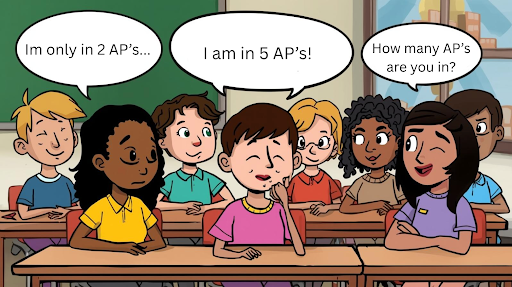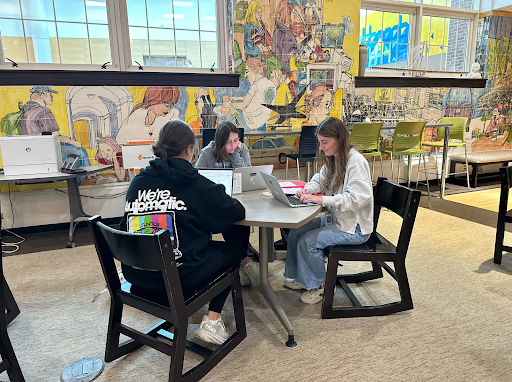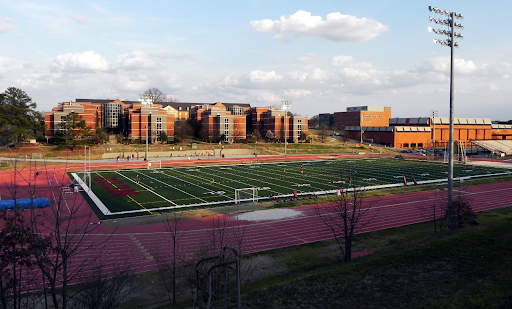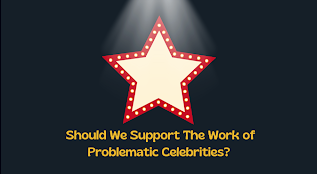Regardless of gender, race, or religion, American citizens are united under the nation’s alma mater: The Pledge of Allegiance.
For the past 16 years of my life, I have been advised to place my hand over my heart and vow support to my country through the pledge. It’s fair to say that I am not alone in this act. Since elementary school, my classmates and I began the school day by reciting the famous words known and loved by most individuals, but not all.
Without judgment, I have noticed that fewer students at LFHS have been reciting the pledge, and while doing so, are promoting disunion. A mix of vague mutters, indistinct whispers, and utter silence has stolen the place of what was once pride in saying the pledge.
It sparked the question – Why?
I cannot easily answer that question.
The climate of LFHS likely plays the biggest factor in the decreased amount of pledge-saying participants. When majority of a classroom is quiet during the pledge, it influences others. I don’t think students are opting out of the pledge for personal reasons, but more to avoid being the “odd one out.”
The pledge allows for the celebration of unity in our country. When saying the pledge, especially in school, there is a reinforced sense of community shared from student to student. Its become so common to emphasize differences between students. By prioritizing our similarities, we can generate more unity.
The greatest gain in reciting the pledge is the daily reminder to not take American freedoms for granted. With generations of military service in my family’s blood, including my grandfather, father, and brother, I am regularly kept aware of this freedom. The daily recitation of the pledge in schools allows people to easily recognize and, more importantly, have a genuine appreciation for their birthrights.
In addition, saying the pledge has been a law in Illinois since 2002, but with respect to the fact that some students don’t align themselves with particular lines in the Pledge of Allegiance, I don’t think anyone should be forced into saying saying it.
Saying the pledge has become an American culture and I hope that more students can understand the importance of participating in the tradition.









KAMAYA cheng • Oct 6, 2025 at 4:06 pm
I hate this artticle
Jason Kowalski • Feb 20, 2025 at 4:36 pm
Much like Lainey O’Neil, your column is written from the mistaken view that the pledge is a symbol of unity or history. “The Star-Spangled Banner,” “My Country Tis of Thee”, or even Neil Diamond’s “America” would work better as a force of ‘unity’ or ‘respecting sacrifice’.
The pledge is an oath of allegiance to a piece of cloth, an absurd proposition.
The pledge is not a commitment to upholding the Constitution or the principles of liberty and democracy, but an oath of loyalty to whichever jackbooted thugs and corrupt politicians happen to wear thirteen stripes and fifty stars on their uniform patches or lapel pins.
The usage of the phrase “under God” not only spits in the face of our commitment to religious freedom and state neutrality, but literally divides “One nation indivisible”.
Finally, the claim of “With liberty and justice for all” is, in the context of the past decades of reality, false. Between overt racial discrimination, federal hit squads murdering non-violent alleged offenders, prison slavery, kangaroo courts, and other measures meant to leave us oppressed and defenseless, America has abandoned that goal long ago.
Frank • Feb 21, 2025 at 4:57 pm
This is a sophomoric criticism that misses the mark on several points.
1. The claim that the Pledge is an “oath of allegiance to a piece of cloth” is a myopic oversimplification of its intent and symbolism. The Pledge opens, “I pledge allegiance to my Flag and to the Republic FOR WHICH IT STANDS.” The “piece of cloth” is explicitly a stand-in for the Republic—its ideals, governance, and people—not an intimate object of worship. As I am sure you know, flags have historically symbolized nations and their values across cultures; the U.S. flag, born during the Revolutionary War, reflects a struggle for self-governance, not blind loyalty to fabric. You may argue it is odd to pledge to a symbol, but symbolism is a core part of all human cultures. Do you also think that Christians kneeling and praying to a cross are actually praying to a Roman instrument of execution?
2. The charge that it’s “not a commitment to the Constitution or principles of liberty and democracy” but to “jackbooted thugs and corrupt politicians.” The text itself contradicts this: it pledges allegiance to the Republic—a system defined by the Constitution, not individuals. It’s not “I pledge allegiance to the President” or “to the police.” So, no, it is not an explicit pledge to “jackboots.”
3. The argument that “under God” spits in the face of the Establishment Clause is absurd. First, lower courts have upheld it as “ceremonial deism,” not a religious mandate. Second, the idea that the Establishment Clause was meant to prohibit any acknowledgment of the concept of God is historically inaccurate. Our founding document, the Declaration of Independence, appeals to God as the authority from which all men derive natural rights. I’m not going to expound upon this further, but examining the historical record shows that the idea of God has always had a part in our nation’s history. The Establishment Clause was not meant to strike all mentions of God from heads of state or national language but to prevent Congress from creating laws favoring or recognizing a particular denomination (like the Church of England).
4. The idea that proclaiming “liberty and justice for all” is hypocritical because of historic shortcomings is preposterous. If anything, your claim that America has abandoned this goal is precisely why we should continue loudly proclaiming “With liberty and justice for all.” However, I think your cherry-picking of various historical sins is ahistorical and does not appreciate the remarkable social changes that have taken us from a series of slave-powered colonies under British rule to a nation in which the descendants of those slaves can become elected to the highest office in the land.
Jason Kowlaksi • Feb 26, 2025 at 10:49 am
1. The pledge was originally written as an effort to promote the sale of flags, so it’d obviously put more emphasis on the symbol than on the meaning. Hence, why the pledge is to the easily-co-opted flag, not just to the republic or its principles.
1-cont. When Christians kneel before the cross, they are worshipping their god, Jesus (the same God as Jehovah) who was tortured and executed on that cross. Jesus’s death on that cross, although not intended as such by the executioners, was a sacrifice for our sins. The above is from the perspective of when I was Catholic, other denominations may disagree.
2. Our Republic, like all other institutions, can be leveraged by evil members and perverse incentives to betray its principles. Our own Federal Government has treated the Constitution like a mere obstacle for over a decade, and the member states have been far worse in that regard. If the intention was to be loyal to the Constitution or its principles, it would make sense to mention such. The oath of naturalization, oath of enlistment, and many oaths of office all take that step.
3. My point isn’t that having such a clause in the pledge is illegal. My point is that its insertion into the oath (a measure taken to distance us from “godless commies” in 1954) serves solely to alienate many loyal and proud Americans who happen to be non-Christians. It’s also another example of religious tensions preventing us from having “One nation indivisible”.
4. Those aren’t “Historic shortcomings”. They are recent at best and ongoing at worst. Prison slavery is ongoing. The Bureau of Alcohol, Tobacco, Firearms, Explosives, And Really Big Fires has conducted raids designed specifically to ensure and excuse the murder of suspects. Dexter Taylor’s trial was a clear miscarriage of justice, and even Trump’s trial has massive flaws in terms of integrity. We’re all aware of the racism of “Affirmative Action”.
Jeff Brincat • Feb 22, 2025 at 7:48 am
I genuinely encourage you to read/reread the thirty-one words of the Pledge. I draw your particular attention to the words “and to, the republic for which it stands, one nation……” While it is an easy, almost dull way of assimilating this phrase, we all really realize this is not a pledge to a “piece of cloth.”
The republic alluded to here is not merely the geographical one defined by the borders of the North and South and the oceans, but the one that has developed through the growth of its people since its founding. WE are the nation and there is a particular commonality that binds us like no other nation on the earth. As we stand as a people today, we have no common origin in a religion, a tribe or a monarchy. This is a truly unique set of circumstances among nations. Yet, we are ALL Americans. It is this amalgamation that does so. Saying the pledge gives evidence in a simple recitation of our commitment to the principles upon which we were founded regardless of how exactly we got here. Ask any Veteran if they served or fought for the “flag.” They served and fought for their comrades (fellow citizens of the nation) and their country I’ll wager.
To be sure, “Liberty and Justice for all” is a never-ending fight. The existence of this phrase in the pledge gives evidence of how important these concepts are to all Americans. That’s why kneeling at the flag or the anthem was so difficult to understand for so many. Those who claim to wish for these qualities should celebrate their presence in the pledge and the symbolism of the flag. These ARE our national values. In our Constitution, our forefathers spoke of forming a “more perfect union.” Explicit was the understanding that it was not, and likely will never be perfect; that is for all of us to strive for in our service to our fellow citizens – the real nation. Each time we say the Pledge, much like the act of voting, jury duty and military service, we get the opportunity to “live” these values.
Aria • Oct 6, 2025 at 4:25 pm
I highly agree with you. The Pledge is an unfulfilled promise that ignores several groups that the government refuses to give rights to, even to this day.
1. “Under God” ignores those who don’t believe in that particular God, and those who believe in different ones are ignored as well. Personally, I do not believe in a higher power such as the God that is mentioned in the Pledge, but there is a majority of others that do, not just me.
2. “Liberty and Justice for all” is not fulfilled due to the amount of rights to immigrants and people of color, along with those of LGBTQ+. Justice is denied for those of that group every day, including women that were denied abortion when it was a life or death situation. LGBTQ+ is actively being grouped with terrible people, like polysexuals being grouped with pedophiles.
I do not stand and say the Pledge of Allegiance because what it stands for is unfulfilled and does not include significant groups that make up our country that is actively by the president, who is a proven felon and possible pedophile.